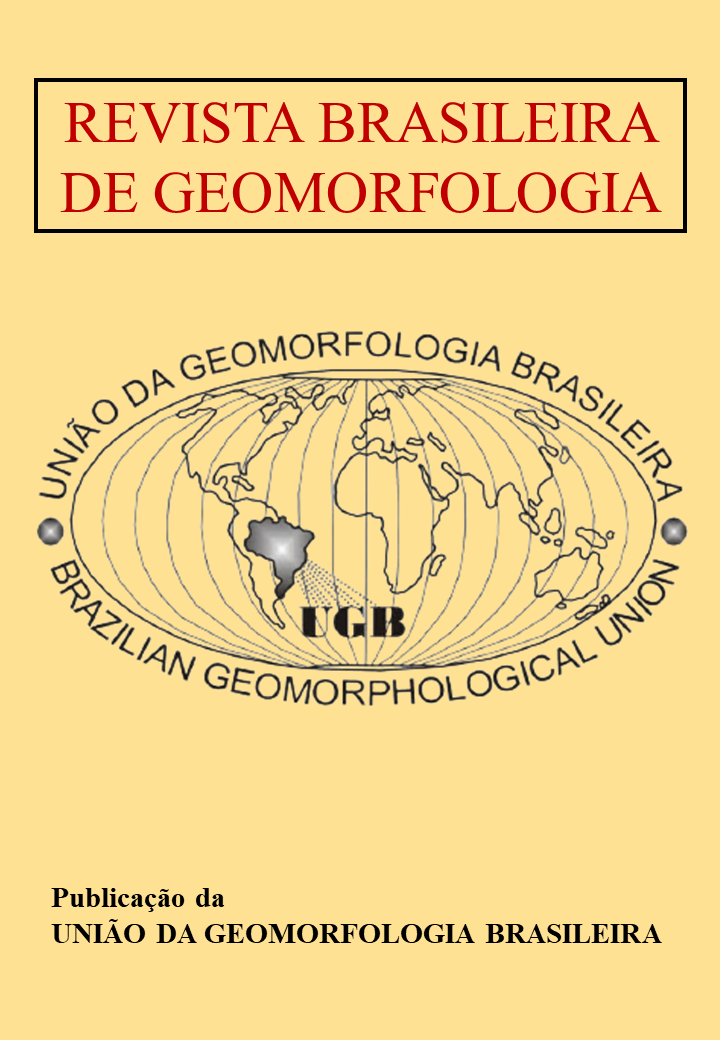Sandification foci in soils derived from Caiuá Indiviso Group Sandstones - Campo Grande, Mato Grosso do Sul
DOI:
https://doi.org/10.20502/rbgeomorfologia.v25i2.2478Keywords:
Fragilidade ambiental, suscetibilidade à erosão, manejo inadequado, mudanças na cobertura e uso da terraAbstract
In this study, sandy areas and areas undergoing sandification processes were mapped in the Guariroba watershed. The genesis and evolution of these sandy areas were also investigated. Mapping was conducted using the Brightness Index 2 (BI2), derived from Sentinel-2 imagery dated August 21, 2021 (winter during a severe drought), in SNAP 9.0.0 software. For validation, a comparison was made with BI2 from the rainy period (March 29, 2023). Sand fields of varying dimensions and numerous degraded areas susceptible to sandification processes were identified. Extensive removal of primary vegetation cover and agricultural activities disregarding the natural fragility of Entisols (Quartzipsamments) increased susceptibility to erosion, nutrient loss, and soil degradation. Over time, degraded areas with exposed soil became more vulnerable to erosive agents such as water and wind, leading to the formation and expansion of sandy areas. The results underscore the urgency of adopting soil and water conservation management practices to mitigate the adverse impacts of erosion and aeolian processes. These measures are critical to safeguard the integrity of this ecosystem, which plays a pivotal role in providing approximately 34% of the water that supplies the city of Campo Grande.
Downloads
Downloads
Published
How to Cite
Issue
Section
License

This work is licensed under a Creative Commons Attribution-NonCommercial 4.0 International License.
Author (s) retain copyright and grant the journal right of first publication with the work simultaneously licensed under the Creative Commons Attribution License that allows sharing the work with recognition of its initial publication in this journal.








